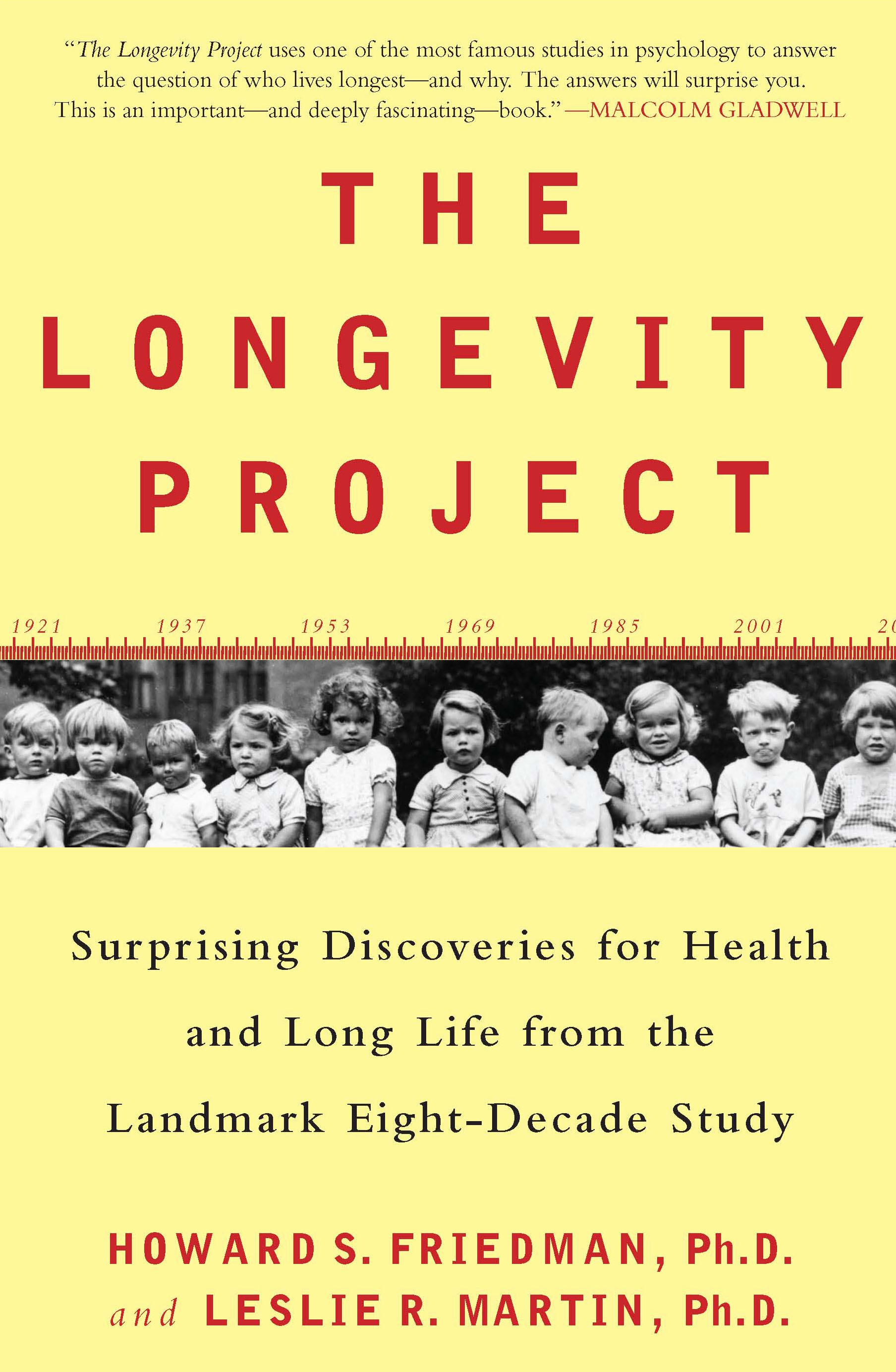 Editor's Note
Editor's NoteIn The Longevity Project, Surprising Discoveries for Health and Long Life from the Landmark Eight-Decade Study, health psychologists Dr. Howard Friedman and Dr. Leslie Martin set out to determine who lives longest and why.
For their Longevity Project, Friedman and Martin used data from an ongoing study begun by Stanford psychologist Lewis Terman in 1921 as he was developing an idea that would become the intelligence quotient, better known as IQ. Terman's study monitored the health, attitudes, hobbies, habits, careers and marriages of a group of bright boys and girls. Eight decades later, Terman's subjects were still providing data. Drs. Friedman and Martin use this trove of information, putting it through a variety of well-accepted statistical analyses, to develop a picture of what works when it comes to health and long life.
Their findings confirm some of what we know (yes, activity is important!), but by looking back at people's lives they are able to trace the subtler choices or clusters of behaviors that add up to a long and healthy life. The result is a book that deepens our understanding of what a healthy life is. What follows is an excerpt from The Longevity Project in which the authors describe some of these clusters or pathways.
One practical way to understand the threats to health and the likely best changes to be made is to match one’s own inclinations to one of the paths we have discovered... There are many variations of healthy and unhealthy pathways, but here are some of the most common ones…
…The groups you associate with often determine the type of person you become. For people who want improved health, association with other healthy people is usually the strongest and most direct path of change. James was not a scientist like John, but he found an analogous, if unorthodox, path to long life. Tactful and sociable but initially not very conscientious, James nevertheless was able to develop a maturity that increased each year. Although his parents divorced, he himself had a good marriage, completed his education, and stayed in touch with his sensitive side—by gradually developing a deep satisfaction and pride in his work and his hobbies, especially his music and stage work. Individuals with an artistic or philosophical bent stayed healthy if they continued to be physically active, steadily matured, and then remained responsible…
We didn’t find that competition and drive are unhealthy characteristics. On the contrary, those who were the most disappointed with their achievements died the youngest…
So there’s no need for worriers to fret that this trait will threaten their health. Unless your worrying is disrupting your friendships or impairing your work, it can come in handy (and be health promoting) when you’re facing various challenges needing thoughtful consideration...
…Across the life span, many predictors emerged as to who would do better and who would do worse, who would live longer and who would die younger. It was not good cheer or being popular and outgoing that made the difference. It was also not those who took life easy, played it safe, or avoided stress who lived the longest. Rather, it was those who – through an often-complex pattern of persistence, prudence, hard work, and close involvement with friends and communities – headed down meaningful, interesting life paths and, as we have illustrated, found their way back to these healthy paths each time they were pushed off the road.
The qualities and lifestyles cultivated by people on these long-life paths reflect an active pursuit of goals, a deep satisfaction with life, and a strong sense of accomplishment. That’s not to say that these people possessed a giddy sense of happiness — we described how cheerfulness doesn’t necessarily lead to a long life. But having a large social network, engaging in physical activities that naturally draw you in, giving back to your community, enjoying and thriving in your career, and nurturing a healthy marriage or close friendships can do more than add many years to your life. Together, they represent the living with purpose that comes from working hard, reaching out to others, and bouncing back from difficult times.




